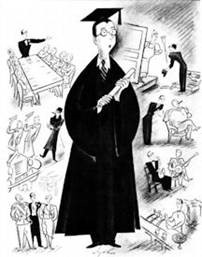 One of the many acronyms that college bound students encounter is COA or cost of attendance. It constantly amazes me when media only talks about tuition costs when they run stories about colleges. What they should do is include the fees, room and board and personal expenses to that figure. That will often bring the COA up another $18,000 or more.
One of the many acronyms that college bound students encounter is COA or cost of attendance. It constantly amazes me when media only talks about tuition costs when they run stories about colleges. What they should do is include the fees, room and board and personal expenses to that figure. That will often bring the COA up another $18,000 or more.
Private colleges that use federal money in their financial aid packages are generally running about $55,000 to $65,000 per year soup to nuts. With the exception of about 50 so-called elite colleges, most offer merit money to highly qualified students or meet the criteria for those scholarships. Admittedly, a good 50% of private colleges and out of state public’s simply offer tuition discounts in the guise of scholarships simply to get students to commit.
Having said that, I have had many students graduate in four years from fine private colleges at less cost than they would have paid at a state university where the latter would be offering only student loans. For many middle income families state schools often create the largest financial burden to a family despite the lowest published cost.
In addition, due to the ever increasing strategy of financial aid leveraging and preferential packaging, an applicant’s academic profile will greatly effect how much grant or scholarship aid he or she will get. While not used by all colleges, these practices will negatively impact the aid a student who is in the lower quarter of the applicant pool. That is why I place a great deal of emphasis on researching the current class profile or common data set to measure where the student may fit in that demographic.
In other words, if two colleges have similar costs of attendance, a student may be offered entirely different financial aid packages should one of the colleges be using leveraged analysis or preferential packaging. Unless, you do a money saving Dry Run with us or someone else who is familiar with the financial aid practices at many colleges, you will seldom know which college is offering the best value from a financial standpoint. Even now with the required Net Cost Calculator on college websites, you still won’t know the true bottom line cost of that college until one week following the student’s acceptance.
The differences outlined above can be as large as $15,000 a year or more. These differences are often masked by sticker price. That is why we encourage all families to include a realistic money-saving Dry Run step in their college planning. If you have not done that yet, then what are you waiting for? Do not repeat the experience that this parent had.

 As we enter the second semester of the academic year, millions of high school students are anxiously awaiting college acceptance letters. Some have heard already from those colleges. The students who applied in a college’s ED, EA or rolling admissions program. But the most competitive colleges will not make their final decisions until late March for the
As we enter the second semester of the academic year, millions of high school students are anxiously awaiting college acceptance letters. Some have heard already from those colleges. The students who applied in a college’s ED, EA or rolling admissions program. But the most competitive colleges will not make their final decisions until late March for the 

 Now What? That is the title of a book by Ari King, in 2009 he was an unemployed graduate of Wesleyan University with a $180,000 degree in Italian Studies. He spent the summer after graduation at his home in California thinking about what to do with his life. At summer’s end, with no job prospects, he headed to New York City thinking his opportunities would be better in a town with 8.4 million people.
Now What? That is the title of a book by Ari King, in 2009 he was an unemployed graduate of Wesleyan University with a $180,000 degree in Italian Studies. He spent the summer after graduation at his home in California thinking about what to do with his life. At summer’s end, with no job prospects, he headed to New York City thinking his opportunities would be better in a town with 8.4 million people. little thought put into how they were going to live and pay bills after college. Each graduate was asked what regrets he or she had and what could have been done differently. The majority said they did not use the career services office early enough (or at all) to find internships. No wonder so many were
little thought put into how they were going to live and pay bills after college. Each graduate was asked what regrets he or she had and what could have been done differently. The majority said they did not use the career services office early enough (or at all) to find internships. No wonder so many were  One of the steps in college planning is becoming aware of the
One of the steps in college planning is becoming aware of the